How Pallet Inverters Solve Border Trade Packaging Compliance and Traceability in Mexico?
Shipping products across international borders, especially between Mexico and the United States, is a complex process. You face strict regulations, tight deadlines, and high expectations from clients. A simple mistake in your packaging, like using the wrong type of wooden pallet, can cause a major headache. Your entire shipment could be rejected, leading to costly delays, unplanned storage fees, and even fines. I have seen this happen to good companies, and it damages not just their bottom line but also their reputation. But there is a straightforward solution. A pallet inverter is a powerful machine that solves these compliance issues at the final stage of your process, ensuring every shipment that leaves your factory is perfectly prepared for cross-border trade.
A pallet inverter directly solves border trade packaging compliance issues in Mexico by enabling a fast, safe, and automated transfer of goods from internal-use pallets to certified, export-ready pallets. This single step ensures adherence to international standards like ISPM 15, which governs wood packaging material. For traceability, the inversion process creates a perfect opportunity to apply fresh, clean, and scannable labels or RFID tags to the new pallet. This guarantees that the physical shipment's data is pristine and matches the digital records, preventing scanning errors and delays at customs checkpoints.
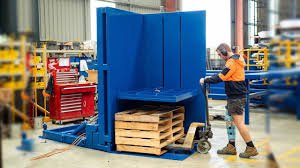
This solution might sound simple, but its impact on a large-scale operation, like a steel mill, is huge. It's more than just a machine; it's a strategic checkpoint that protects your revenue and your relationships with clients. As an engineer who has built and installed these systems, I want to show you exactly how this technology works and why it is so critical for business leaders like Javier Morales, who manage complex operations and demand real returns on every investment. Let's look deeper into the specific challenges and how a pallet inverter provides clear, practical answers.
How do pallet inverters directly address ISPM 15 compliance for Mexican exports?
The threat of a shipment being stopped at the border because of a non-compliant wooden pallet is a constant worry for any exporter in Mexico. International regulations, specifically ISPM 15, are strict and unforgiving. Using the wrong pallet is not a minor oversight; it's a guaranteed failure point in your supply chain. For a CEO overseeing a massive steel operation, this kind of preventable error is unacceptable. It represents lost time, wasted money, and a broken promise to your customer. The good news is that a pallet inverter acts as a final, foolproof gateway in your logistics flow, ensuring every single load destined for export sits on a fully compliant, stamped, and approved pallet.
A pallet inverter directly addresses ISPM 15 compliance by allowing Mexican exporters to transfer their products from standard, in-house wooden pallets onto certified, heat-treated or plastic pallets just before dispatch. This process eliminates the risk of using non-compliant wood packaging materials in international shipments, which is the primary focus of the ISPM 15 standard.
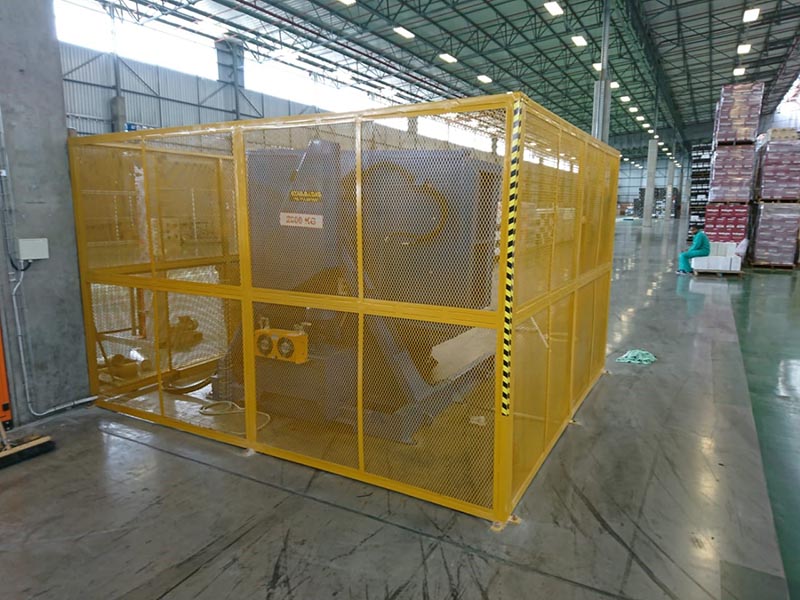
Dive Deeper: The Inverter as a Compliance Tool
As an engineer, I like to break problems down to their core components. The challenge here is not just about pallets; it's about managing risk and cost effectively.
The Core Problem: Wood Packaging and Pests
ISPM 15 (International Standards for Phytosanitary Measures No. 15) is a global standard created to prevent the international transport of diseases and insects that could negatively affect plants or ecosystems. Wood is a natural material, and it can harbor invasive pests. To comply with ISPM 15, wood packaging material (WPM), including pallets, must be treated to kill any pests. The two main treatments are Heat Treatment (HT), where the wood core is heated to 56°C for at least 30 minutes, or fumigation with Methyl Bromide (MB). After treatment, the pallet is stamped with a special mark of compliance. Any pallet without this mark will be rejected at the border. For a high-volume facility like a steel mill in Mexico, managing a massive inventory of these more expensive, treated pallets for both internal and external use is a financial and logistical burden.
The Pallet Inverter as a Cost-Control Gateway
This is where a pallet inverter becomes a strategic asset. You can continue using cheaper, standard, non-treated wooden pallets for all internal movements—from the production line to the warehouse. These pallets are durable and cost-effective for in-house use. The product stays on this pallet until the very last moment before it's loaded onto a truck for export. At this final checkpoint, the pallet inverter takes over. The machine securely clamps the entire load, rotates it, and allows the operator to easily remove the internal pallet and replace it with a clean, certified ISPM 15-compliant pallet. This "just-in-time" pallet switch means you only need to purchase and manage a smaller inventory of the more expensive export pallets.
Here is a simple comparison to illustrate the point:
| Aspect | Using Compliant Pallets Everywhere | Using a Pallet Inverter |
|---|---|---|
| Pallet Inventory Cost | High. All pallets must be ISPM 15 certified. | Lower. Only a small stock of export pallets is needed. |
| Risk of Internal Damage | High. Expensive pallets can be damaged in the warehouse. | Low. Cheaper pallets take the daily wear and tear. |
| Logistical Complexity | High. Must track and segregate two pallet types. | Low. The process is standardized at the shipping dock. |
| Compliance Risk | Low, but at a very high operational cost. | Extremely Low. Compliance is guaranteed at the final step. |
For a CEO like Javier, who is intensely focused on reducing operating costs, this approach is a clear winner. It directly attacks the cost of compliance without compromising on the standard itself. You are not just buying a machine; you are investing in a smarter, more cost-effective logistics process.
Can a pallet inverter improve traceability and reduce labeling errors at the border?
Your factory has a sophisticated system. A steel coil is produced, and its data is captured. It's moved to a pallet, wrapped, and a label is applied. But between that moment and its arrival at the border, a lot can happen. The pallet gets moved multiple times, dust and grime accumulate, and the label can get scuffed, torn, or hidden. When that shipment reaches a customs agent in Laredo or El Paso, a damaged barcode is a dead end. This forces manual checks, introduces the risk of human error, and breaks the seamless traceability chain you built with your expensive MES and IoT platforms. The pallet inversion process, however, creates a perfect, scheduled opportunity to inspect the load and apply a fresh, accurate, and perfectly positioned label, ensuring a smooth, automated scan every time.
A pallet inverter dramatically improves traceability by providing a final quality control checkpoint where goods are transferred to a new, clean pallet. This allows for the application of pristine, scannable labels (like GS1 barcodes or QR codes) and RFID tags. It eliminates problems caused by old, damaged, or obscured labels and ensures the final physical package data perfectly matches the digital manifest, significantly reducing the chance of data entry errors at customs.
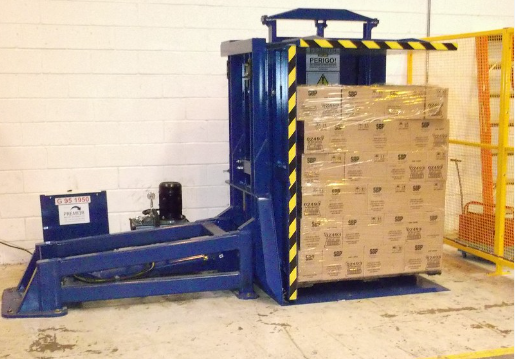
Dive Deeper: Closing the Physical-Digital Gap
In my journey from engineer to factory owner, I learned that digital transformation is only successful if it connects seamlessly with the physical world. A pallet inverter is a critical bridge for this connection.
Bridging the "Last Mile" of Data
Javier's goal of deploying MES, IoT sensors, and big data is about creating a transparent, efficient operation. You can track a product with incredible precision inside your four walls. But all that data integrity is lost if the physical identifier—the label on the pallet—fails at the most critical point: the border crossing. The pallet inverter solves this "last mile" problem. The act of changing the pallet is not just a physical task; it becomes a data verification event. It is the last chance to ensure the physical world matches the digital record before the product leaves your control.
I once worked with a client who manufactured steel wire. Their products were often coated in a light oil to prevent rust. During internal transport and warehousing, their paper labels would absorb this oil, making the barcodes unreadable. They faced constant delays. We installed a pallet inverter at their shipping bay and integrated a simple step: after the pallet was switched, a new, durable synthetic label was applied. Their border crossing rejections dropped to zero almost overnight. It was a simple change to their process, enabled by the machine.
Enhancing Data Integrity for Cross-Border Trade
The process enabled by a pallet inverter creates a structured workflow for data integrity. It's no longer a matter of chance whether a label is readable. It becomes a guaranteed outcome.
Here is how the workflow enhances traceability:
| Step | Old Process (Without Inverter) | New Process (With Inverter) |
|---|---|---|
| 1. Initial Labeling | Label applied at the end of the production line. | Label applied at the end of the production line. |
| 2. Warehousing | Label is exposed to dirt, damage, and moisture. | Internal label is exposed, but it doesn't matter. |
| 3. Pre-Shipment | Load is picked. Label condition is unknown or ignored. | Load is moved to the inverter station. |
| 4. Final Check | No formal final check. Relies on visual inspection. | Inverter Cycle: Load is inverted, old pallet removed. |
| 5. Re-labeling | Not possible without manual, time-consuming effort. | A fresh, final export label/RFID tag is applied. |
| 6. Verification | Scanners at the dock may or may not read the old label. | A final scan verifies the new label and updates the MES/WMS. |
By building this step into your process, you are actively managing your data's physical representation. For a company moving two million tons of steel a year, the cumulative effect of preventing hundreds of small delays is massive. It translates directly into higher throughput, lower operational costs, and, most importantly, a reputation for reliability with your international customers.
What is the real ROI of a pallet inverter in a high-capacity steel mill?
As a business owner, I know that every investment must be justified. When you're looking at a piece of equipment like a pallet inverter, you need to see a clear and compelling return on investment (ROI). It's not enough for a machine to just perform a function. In a competitive environment with fluctuating costs and tight margins, new equipment must actively contribute to the bottom line by either cutting costs, increasing output, or reducing risk. You might be wondering if a pallet inverter is a necessary strategic tool or simply a "nice-to-have" piece of machinery. From my experience, for a high-capacity operation involved in international trade, the ROI is faster and more significant than most people realize.
The real ROI of a pallet inverter in a steel mill is a combination of direct cost savings and indirect financial gains. Direct savings come from eliminating fines and border delays, drastically reducing labor costs and injury risks tied to manual restacking, minimizing product damage during pallet exchange, and optimizing the use of expensive compliant pallets. Indirectly, the ROI grows through increased throughput and enhanced customer trust.
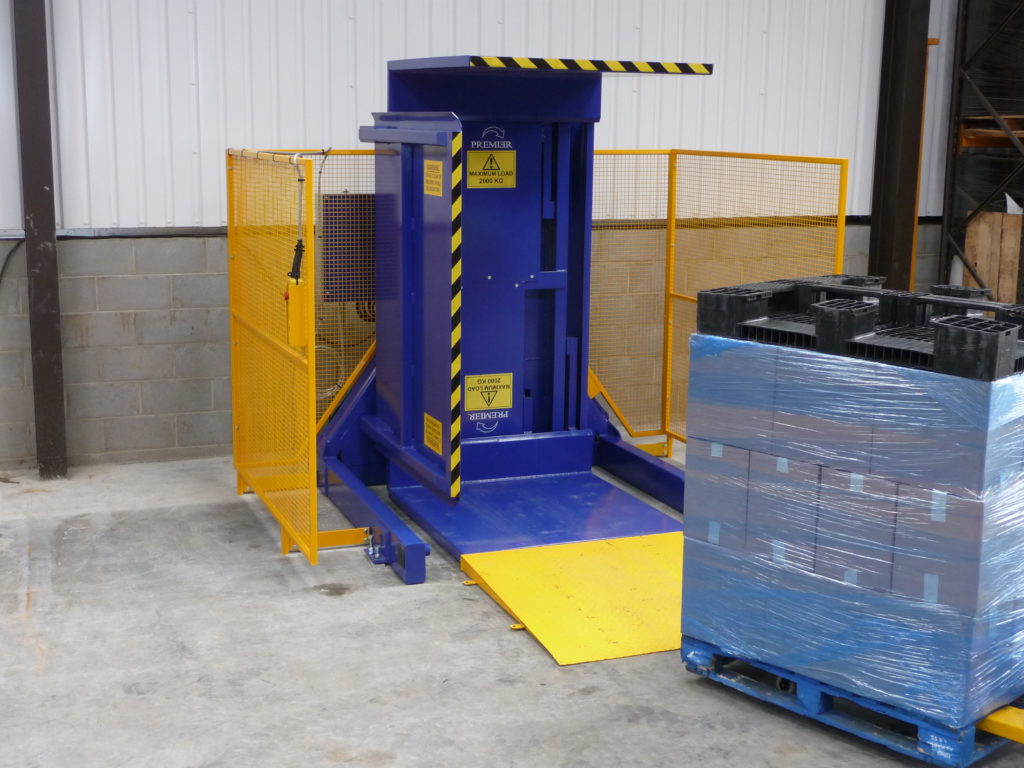
Dive Deeper: A Pragmatic Look at the Numbers
A CEO like Javier needs to see the numbers. The ROI calculation for a pallet inverter is refreshingly straightforward and touches on several of his key goals, such as lowering operating costs and improving efficiency.
Direct Cost Savings
These are the most immediate and easily quantifiable returns.
- Elimination of Non-Compliance Costs: This is the biggest and most obvious saving. A single rejected shipment can cost thousands of dollars in transportation, storage (demurrage), and labor to fix the problem, not to mention potential fines. Preventing just a handful of these incidents a year can often pay for the machine itself.
- Reduced Labor Costs: The alternative to a pallet inverter is manual restacking. This requires at least two workers to de-stack and re-stack a pallet. For heavy products like steel parts, this is slow, inefficient, and physically demanding. A pallet inverter requires one operator and completes the task in a fraction of the time. If you are swapping 50 pallets a day, the labor savings add up quickly.
- Minimized Product Damage: Manual handling increases the risk of dropping or damaging products. A pallet inverter clamps the load securely throughout the entire process, virtually eliminating the risk of damage during the pallet transfer. For high-value steel products, this is a significant saving.
- Optimized Pallet Inventory: As discussed, you no longer need to buy expensive ISPM 15 pallets for your entire operation. This reduces your upfront cash outlay for pallets and simplifies your inventory management.
Indirect Gains and Risk Mitigation
These benefits are just as important and contribute significantly to long-term profitability.
- Improved Worker Safety: Manual restacking of heavy loads is a major cause of back injuries and other ergonomic issues. A pallet inverter removes this hazardous task, reducing the risk of workplace injuries and the associated costs (lost time, insurance claims). This is a critical factor in running a safe and responsible factory.
- Increased Throughput: A pallet inverter can swap a pallet in under two minutes. Manual restacking can take 15-20 minutes. This speed means your loading docks are more efficient, trucks are loaded faster, and you can ship more product in the same amount of time. This directly supports the goal of increasing capacity utilization.
- Enhanced Reputation: Consistently delivering on time without customs issues builds a powerful reputation. Your customers in the US will see you as a reliable, low-risk partner, which is a significant competitive advantage.
Here is a simple framework for thinking about the ROI:
| ROI Factor | Description | Impact on Goals |
|---|---|---|
| Avoided Fines/Delays | Money saved from preventing customs rejections. | Lowers operating cost. |
| Labor Savings | Fewer man-hours needed for pallet swapping. | Lowers operating cost by 8%+. |
| Product Damage Reduction | Less scrap and rework due to handling errors. | Increases profit margin. |
| Worker Safety | Lower risk of injuries and insurance costs. | Lowers operating cost. |
| Shipping Throughput | Faster loading times at the dock. | Increases capacity utilization. |
When you analyze all these factors, the pallet inverter transforms from a simple machine into a strategic investment that directly supports the core financial and operational goals of a modern steel mill.
How does integrating a pallet inverter align with a steel mill's digitalization and automation goals?
You have made significant investments in creating a smart factory. Your production lines are equipped with sensors, and your MES platform gives you real-time visibility into operations. But then the product reaches the end of the line, the shipping dock, and the process might suddenly revert to manual checklists and standalone equipment. This creates a critical blind spot in your data chain and a bottleneck in your workflow. This disconnect between a highly automated factory and a manual shipping process undermines your entire digitalization strategy. It is like building a state-of-the-art data highway that ends in a slow, manual toll booth. Modern pallet inverters, however, are not isolated machines. They are designed to be fully integrated into automated conveyor lines and to communicate directly with your higher-level MES or Warehouse Management Systems (WMS).
Integrating a pallet inverter aligns perfectly with digitalization goals by transforming a manual task into an automated, data-driven checkpoint. It can be connected to MES/WMS platforms to automatically receive instructions, verify load data, confirm pallet compliance, trigger automated labeling systems, and report back that the product is officially "ready for export." This creates a fully automated, traceable, and efficient end-of-line process that closes the loop on your smart factory initiative.
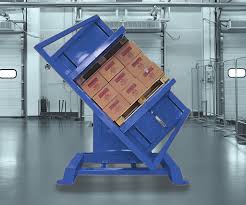
Dive Deeper: From Standalone Machine to Integrated System Node
For an engineer and business owner like Javier, who appreciates technology, the true power of a pallet inverter is unlocked through integration. It becomes another intelligent node in his factory's network.
The Pallet Inverter as an IoT End-Point
Today's pallet inverters are built with automation in mind. They are controlled by PLCs (Programmable Logic Controllers) that can easily communicate with other systems using standard industrial protocols like Ethernet/IP or Profinet. This means the inverter is no longer just a machine that an operator controls with a button; it becomes a responsive part of a larger automated sequence.
Imagine this workflow:
- An automated guided vehicle (AGV) or conveyor line delivers a palletized load to the inverter's infeed station.
- A barcode scanner reads the pallet's current ID.
- The scanner sends this ID to the WMS. The WMS verifies it's an export order and sends a "start cycle" command to the pallet inverter's PLC.
- The inverter automatically performs the inversion cycle. An automated dispenser places a new, compliant pallet.
- The machine completes the cycle.
- An automated label applicator, also receiving data from the WMS, prints and applies the correct final shipping label.
- A final scanner at the outfeed reads the new label, confirms it's correct, and sends a "status update" to the WMS, marking the order as "shipped."
This entire process happens without significant manual intervention. It's fast, error-proof, and fully traceable.
Transforming the Process Flow
This integration fundamentally changes the nature of your shipping process from reactive to proactive. It aligns directly with the goals of increasing efficiency and deploying a comprehensive digital platform.
| Process Flow Element | Manual Process | Fully Integrated Process |
|---|---|---|
| Initiation | A worker looks at a paper list and finds the pallet. | WMS automatically dispatches the load to the inverter. |
| Pallet Swap | Operator manually controls the inverter cycle. | Inverter receives command and runs the cycle automatically. |
| Verification | Relies on the operator visually checking the pallet type. | System verifies the correct compliant pallet is used. |
| Labeling | Operator manually finds and applies a pre-printed label. | System prints and applies the correct label on-demand. |
| Data Update | Worker manually enters data into a terminal. | System automatically updates WMS/MES in real-time. |
| Error Potential | High (wrong pallet, wrong label, data entry mistake). | Extremely Low. System-level checks prevent errors. |
As someone who has designed and built machines for decades, I've seen this evolution firsthand. We started by building strong, reliable machines. Now, we build smart, connected machines. For a forward-thinking leader like Javier, integrating a pallet inverter is a natural and necessary step in realizing his vision for a fully digitalized, efficient, and profitable steel mill. It ensures that his investment in high-level data systems pays off all the way to the shipping dock.
Conclusion
Pallet inverters are more than simple machines. They are essential tools for ensuring compliance, improving traceability, and boosting efficiency for any Mexican business engaged in cross-border trade.


